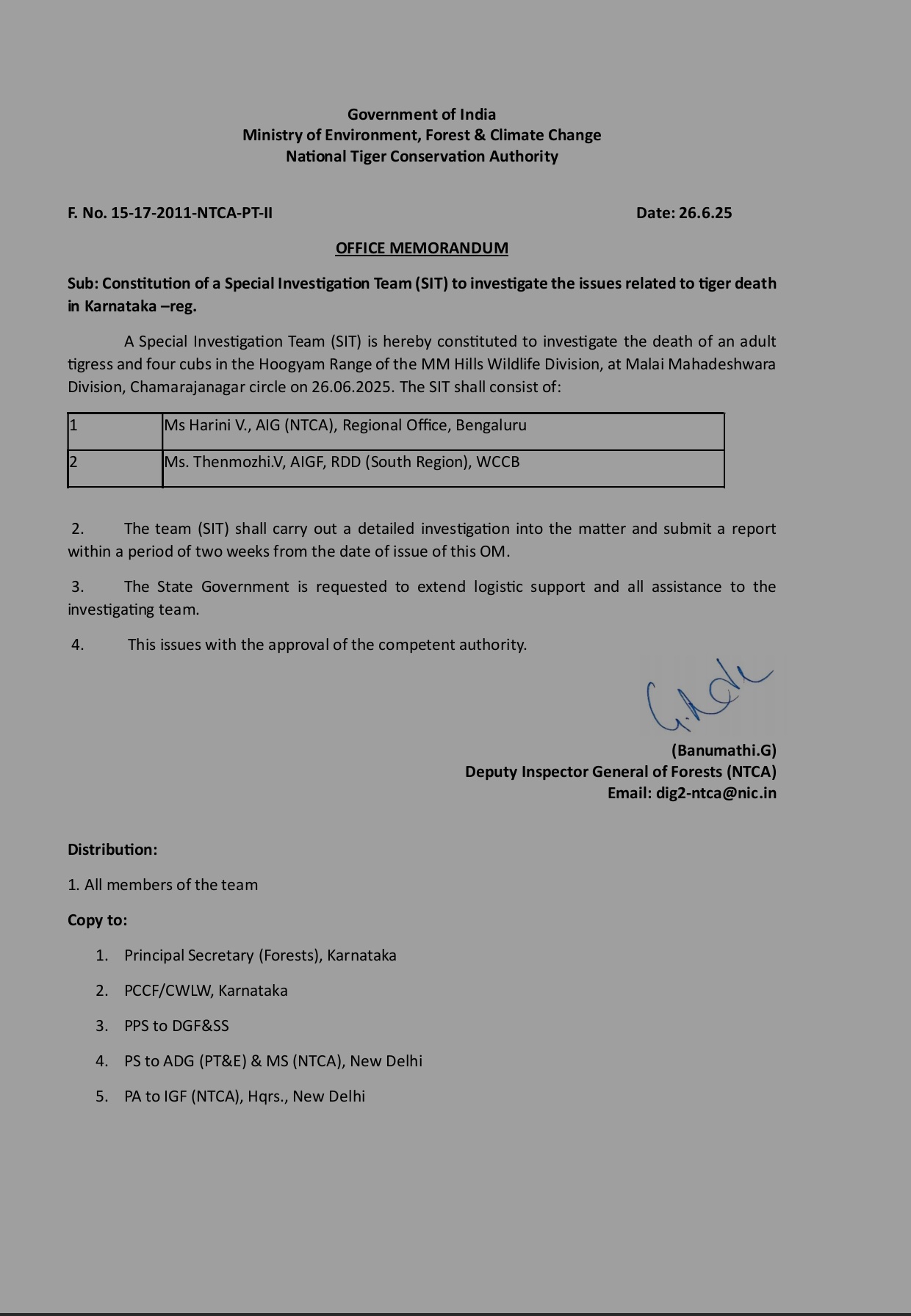A tragic discovery at Karnataka's M.M. Hills Wildlife Sanctuary has stirred nationwide grief and anger, as five tigers, an 11-year-old tigress and her four cubs, were found dead, allegedly after consuming a poisoned cow carcass. The deaths, believed to have occurred on 25 June, have triggered a criminal investigation and renewed scrutiny of lapses in forest department oversight.
Forest officials believe the tigress, first identified in 2014, attacked and partially consumed the cow before returning to the carcass with her cubs. All five succumbed soon after. A poisoned bait theory has since gained traction, with toxicology results awaited. Post-mortems were conducted following National Tiger Conservation Authority (NTCA) protocols.
The state government confirmed the incident and ordered a high-level inquiry. Karnataka's Forest, Ecology and Environment Minister, Eshwar B. Khandre, stated, "Preliminary reports indicate that all these are unnatural deaths. According to protocol, a postmortem will be conducted. This is a heart-wrenching incident. I am instructing the vigilance squad to work more efficiently and increase monitoring rounds at all national parks and sanctuaries in the state."

Also read: Stray tiger trapped in Sundarbans, WB
The minister's remarks came amid growing criticism from conservationists. Environmentalist Joseph Hoover strongly condemned the lack of surveillance, citing unpaid salaries to forest watchers. "What was the DCF doing? These forest watchers have not been paid for months, and they have raised these issues with the officers. How do we expect them to go into the forest and do their duty?" he asked.
The state forest department has formed a committee comprising senior officers, a veterinary expert and a wildlife biologist to investigate the deaths. The panel is expected to submit a report within a fortnight. Alongside necropsies, officials collected samples for toxicology, histopathology and DNA analysis.
The sanctuary, located in Chamarajanagar district, is part of the Eastern Ghats landscape and is home to several big cats. Karnataka houses the second-largest tiger population in India, with 563 individuals recorded in the latest national census.
In response to the tragedy, forest authorities announced a slew of immediate measures: GPS-tagged patrols, real-time surveillance using infrared cameras, anti-snare drives, and higher alert levels at anti-poaching camps.
Meanwhile, the probe has turned towards the poisoned cow’s origin. Officials are questioning local herdsmen, though none have admitted to owning the carcass. Investigators are exploring whether cattle had illegally entered the sanctuary, or if the carcass was deliberately introduced to kill wildlife. Authorities are also examining if cattle grazing permissions had lapsed or were informally permitted in the core sanctuary area.
The loss of an entire tiger family has jolted wildlife advocates and intensified calls for better staff welfare and technology-based surveillance in protected areas. While the motive behind the suspected poisoning remains unclear, officials have not ruled out the involvement of poachers.


